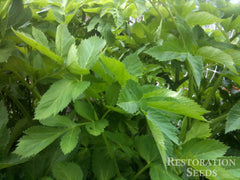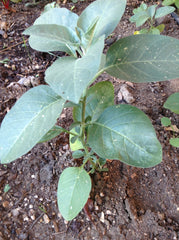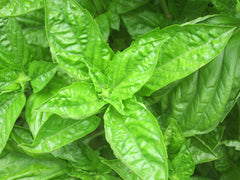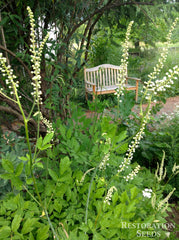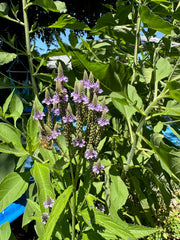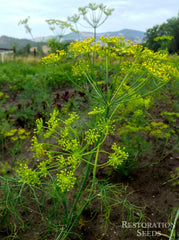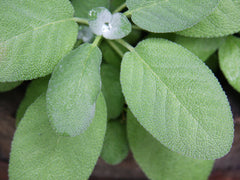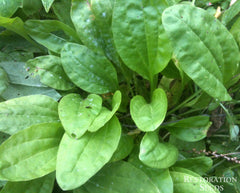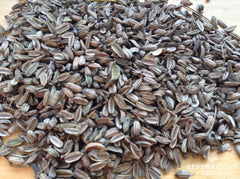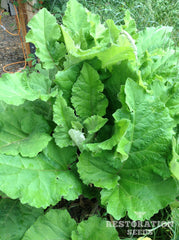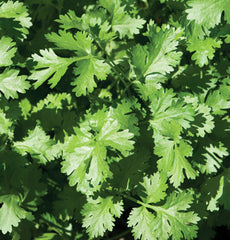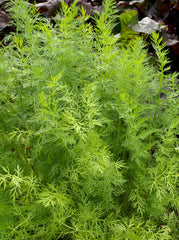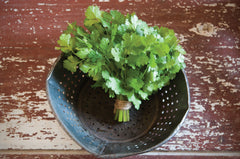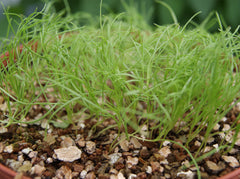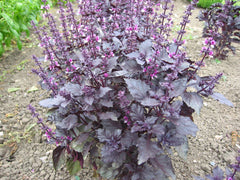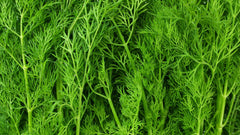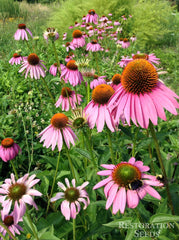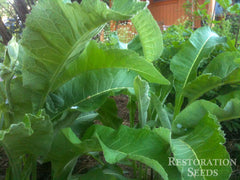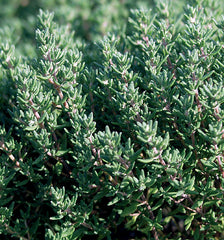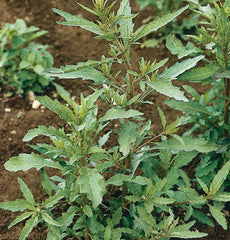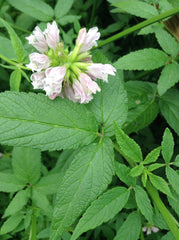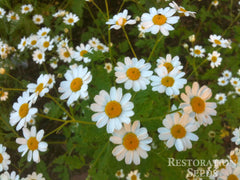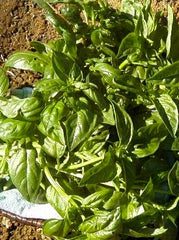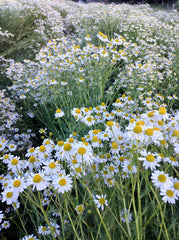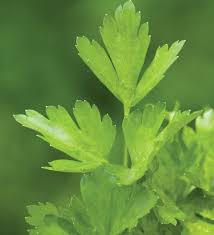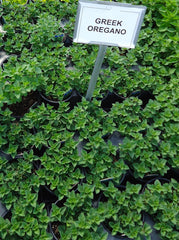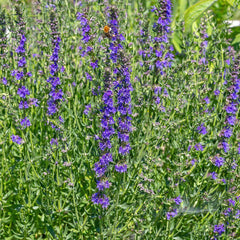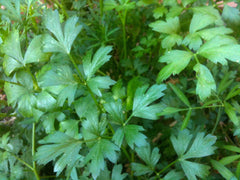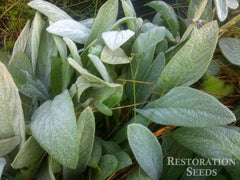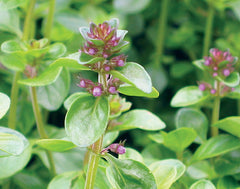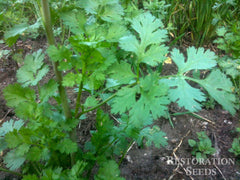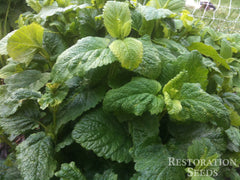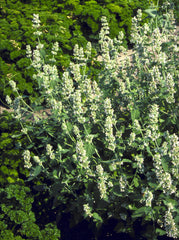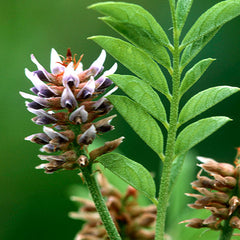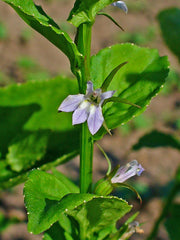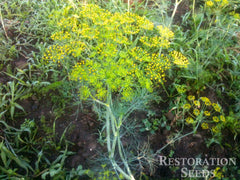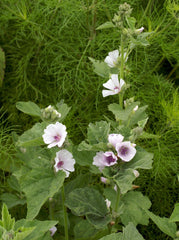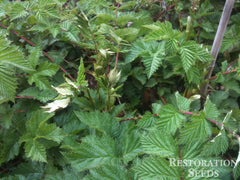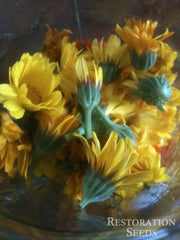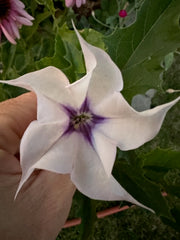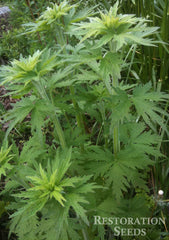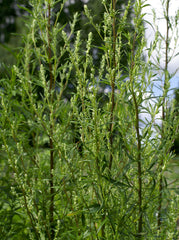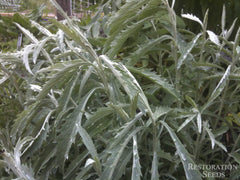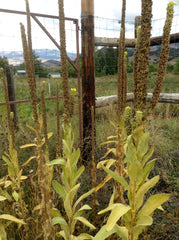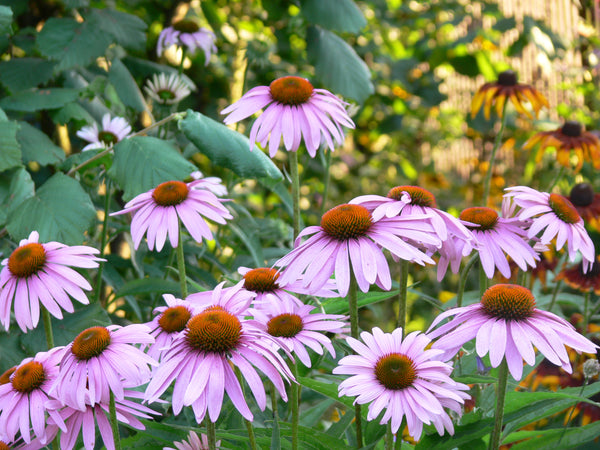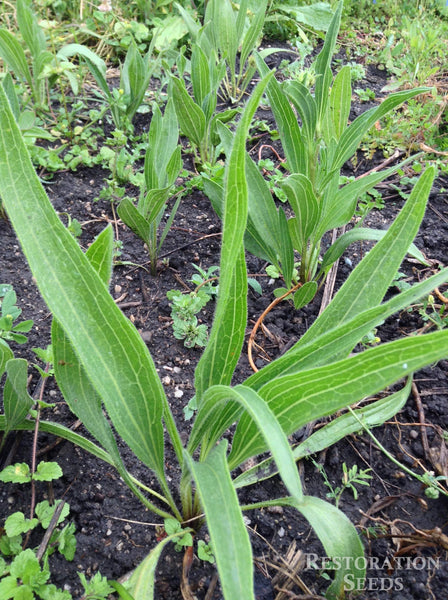Echinacea angustifolia
Echinacea angustifolia
HOW TO GROW ECHINACEA ANGUSTIFOLIA
Sow at 64-71˚F for 2-4 weeks, move to 40˚F cold stratification for 9 weeks, move to 50˚F for germination. Requires constant moisture for germination. If it is difficult to maintain ideal moisture conditions in the field, direct sowing is not recommended. Plant out directly or pot up once or twice enhances root development. Reduce weed competition to enhance root production for medicine. Seeds require light to germinate, press into soil, do not cover. Read more about growing on our web site.Echinacea angustifolia will not tolerate acid soils. Do not start in potting soils with peat moss or sawdust, use coir with a neutral pH. It needs alkaline soils and will tolerate very high alkaline levels. Start greenhouse grown plants 120 days before planting date in individual pots or seedling trays. There are about 145,000 seeds per pound of Echinacea angustifolia. You will need 30,000 to 40,000 plants or 1.5 to 2 pounds of seed per acre. Plants transplant well if watered-in with water transplanter or by hand.Treatment with ethylene gas has been shown to speed germination of Echinacea angustifolia by Neil Reese of the South Dakota State University. Ethylene is a plant hormone associated with ripening apples and pears. Ethrel is commercially available non-organic product that releases ethylene gas and is sold under the trade name “Ethephon”. For an organic method, place flats in a root cellar with ripening apples for a couple weeks. Alternately, direct so in the August on steam cleaned, sterilized soil at the rate of 100 seeds per square foot. Seeds will stratify naturally, germinate in early spring and be ready to transplant into bareroot into rows by June or the beginning of July at the latest. Controlling weeds is difficult with direct sowing because the plants are very small until well established and require hand weeding. Don’t fertilize until plants are established in mid-July to not stimulate weed growth.Once established, echinaceas thrive with little care, are drought tolerant and do not favor highly enriched soil. Good drainage is essential, will not tolerate wet soils. Per acre, 1,500 pounds of dry foliage the second and third year is a good crop and 1,200 pounds of roots is good at the end of the third year. Concentrate on growing strong Echinacea plants the first year. Harvest foliage “the herb’ the second and third growing season without hurting root production very much. Harvest and dehydrate root in the autumn of the third year. Harvest foliage like hay, cut, swath, sun dry and bale. For the highest quality herb cut and dehydrate it at 120˚F to 10 percent moisture content, then bale, put in burlap bag and sew shut.E. angustifolia is more difficult to harvest than E. purpurea. Echinacea angustifolia roots will grow down 15 to 18”. You can hand dig but this generally looses the bottom several inches. To harvest the most root, run a tractor pulled sub-soil knife with long bars behind it to raise the soil several inches and pop the roots up a bit, then dig with a modified field potato digger. Take to rotary washer, dry at 120˚F until less than 10 percent moisture. Put in burlap bag, weight and sew shut. If you hand dig a field, you may see 15-20 percent root grow-back the next spring. Soil pH 6.1-7.0. Hardiness zones 3-10. Perennial.
Days from maturity calculated from the date of seeding. Average 3,300 seeds per ounce. Difficult to germinate. With stratified seed, 28 percent to 35 percent germination is okay and 40 percent is great. It is normal to buy seed guaranteed to have 80 percent viable embryos and still only get 28-35 percent germination due to the large number that abort after moisture is added to the soil. Usual seed life: best fresh 1st year, but remains viable up to 7 years if refrigerated. Do not save first year seed, 2% germination rate. Good seed crops from second or third year seed, up to 100 pounds of seed per acre.
Planting Depth surface-1/4” requires light
Soil Temp. Germ. 65-70˚F stratify
Days to Germ. 15-25
Plant Spacing 12”
Row Spacing 18-24”
Days To Maturity 2-3 years
Part Shade, Moist Well Drained
Days from maturity calculated from the date of seeding. Average 3,300 seeds per ounce. Difficult to germinate. With stratified seed, 28 percent to 35 percent germination is okay and 40 percent is great. It is normal to buy seed guaranteed to have 80 percent viable embryos and still only get 28-35 percent germination due to the large number that abort after moisture is added to the soil. Usual seed life: best fresh 1st year, but remains viable up to 7 years if refrigerated. Do not save first year seed, 2% germination rate. Good seed crops from second or third year seed, up to 100 pounds of seed per acre.
Planting Depth surface-1/4” requires light
Soil Temp. Germ. 65-70˚F stratify
Days to Germ. 15-25
Plant Spacing 12”
Row Spacing 18-24”
Days To Maturity 2-3 years
Part Shade, Moist Well Drained
- 75 Seeds$4.10
- 750 Seeds$24.50
Echinacea angustifolia is much more difficult to germinate, grow and harvest than Echinacea purpurea. Taken at the early stage of any infection, primarily for the prevention or treatment of cold and flu symptoms, Echinacea speeds the immune system response by up to 24 hours. Blood purifier. Drought tolerant, long la...
Echinacea angustifolia is much more difficult to germinate, grow and harvest than Echinacea purpurea. Taken at the early stage of any infection, primarily for the prevention or treatment of cold and flu symptoms, Echinacea speeds the immune system response by up to 24 hours. Blood purifier. Drought tolerant, long lasting for cut or dry flowers, sturdy and prolific, grows 16 to 28” tall. Also known as narrow leaved purple coneflower. Tags: Color: Purple, Specialty: Drought Tolerant.
Echinacea angustifolia is a prairie species found in the U.S. and Canada on barrens and dry western parries with rocky to sandy-clay soil. There are two subspecies: E. a. angustifolia is native from Saskatchewan and Manitoba in the north to New Mexico, Texas, and Louisiana in the south, while E. a. strigosa has a more limited range in Kansas, Oklahoma, Texas, and Louisiana. Echinacea is a genus of nine plant species in the aster family native to North America. Echinacea species were used by native groups for medicinal purposes than any other plant. Today Echinacea is the best selling herb in health-food stores accounting for nearly 10 percent of total sales in the U.S.
Echinacea angustifolia is a prairie species found in the U.S. and Canada on barrens and dry western parries with rocky to sandy-clay soil. There are two subspecies: E. a. angustifolia is native from Saskatchewan and Manitoba in the north to New Mexico, Texas, and Louisiana in the south, while E. a. strigosa has a more limited range in Kansas, Oklahoma, Texas, and Louisiana. Echinacea is a genus of nine plant species in the aster family native to North America. Echinacea species were used by native groups for medicinal purposes than any other plant. Today Echinacea is the best selling herb in health-food stores accounting for nearly 10 percent of total sales in the U.S.
Learn More
Reviews
